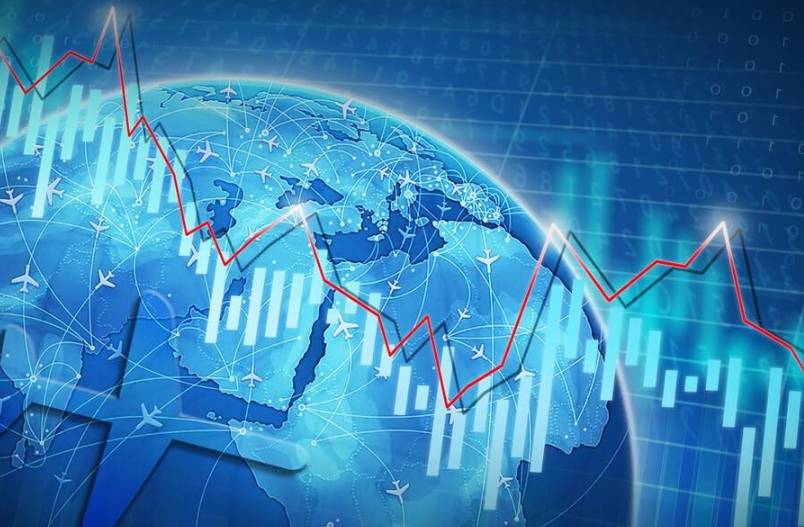Money Markets in Flux: Globalization and the Digital Shift
Advertisements
In recent years, the currency market has been undergoing a transformation like never before, with globalization and digitalization acting as its driving forces. Globalization has intensified the interconnections among national financial markets, while digitalization has ushered in technological innovations that fundamentally alter traditional financial operations. While these developments offer numerous opportunities, they also bring significant challenges that cannot be overlooked.
From a globalization perspective, the interconnectedness of currency markets worldwide has dramatically increased. Countries are embedding themselves deeper into the global financial system through the free flow of capital and transnational trade activities. For instance, the foreign exchange trading volume has soared, particularly between developed countries and emerging markets. This international capital movement, while enhancing market liquidity and optimizing fund allocations, also leads to heightened systemic risks. A financial upheaval in a major global power or region can have ripple effects that swiftly impact other parts of the world.
A vivid example of this phenomenon occurred during the 2008 global financial crisis. The subprime mortgage crisis in the United States quickly spread to various countries via complex financial instruments and derivatives. Many national currency markets faced severe turmoil, exposing the vulnerability of currency markets to systemic risks in a globalized context. The crisis highlighted how intertwined financial systems can amplify the fallout from localized economic disruptions.
On the other hand, the challenges brought about by digitalization are more intricate and far-reaching. The emergence of new technologies like blockchain, artificial intelligence, and cloud computing has accelerated the transformation of the currency market toward a digital future. The rise of digital currencies, such as Bitcoin, alongside central bank digital currencies (CBDCs), signifies a fundamental shift in the form of money itself. Unlike traditional paper money and coins, digital currencies rely on complex algorithms and decentralized technologies to facilitate value transfer.
Despite the opportunities for innovation that digital currencies present, they pose new challenges for existing monetary policies and regulatory frameworks. Central banks and governments grapple with how to balance the free circulation of digital currencies with the need to maintain monetary sovereignty. This issue is particularly critical in the realm of cross-border payments and currency exchanges, where digital currencies have the potential to alter the roles of traditional financial institutions and diminish the regulatory capacity of central banks. Consequently, global regulatory bodies are under pressure to devise more flexible and adaptive frameworks to address the rapid changes spurred by digitalization.

The swift development of digitalization has also raised concerns around data security and privacy protection. The digitization of the currency market implies that a substantial amount of transaction and financial data will be transmitted and stored through digital networks, leading to potential cybersecurity risks. In the current global context, where interconnectivity between financial institutions is increasing, cybersecurity incidents such as data breaches and network attacks could trigger chain reactions that threaten global financial stability. As a result, ensuring the security and reliability of digital currency markets has become a crucial aspect of the digitization process in global currency markets.
In addressing these challenges, the application of financial technology (fintech) has emerged as a significant driving force within national currency markets. By leveraging big data, artificial intelligence, and blockchain technologies, financial institutions can enhance trading efficiency, reduce costs, and boost the transparency of capital flow. This not only contributes to the operational efficiency of the global currency market but also helps mitigate market volatility. For instance, the decentralized and immutable nature of blockchain technology can provide greater security and efficiency in cross-border payments, circumventing the time and cost issues associated with intermediaries in traditional financial systems.
The integration of globalization and digitalization is redefining the ecosystem of the currency market. Central banks around the world are speeding up their research and development of digital currencies. For example, China has launched pilot projects for its digital renminbi in several cities, while the European Union is actively studying the feasibility of a digital euro. In the United States, private enterprises are driving the development of cryptocurrencies; although a central bank digital currency has yet to be formally implemented, various stablecoins like USDT and USDC are already widely used in the market. These trends indicate that future currency markets will increasingly depend on digital technologies and the interconnectedness of global networks.
However, it is essential to note that globalization and digitalization of the currency market do not guarantee that all countries and regions will uniformly benefit. Emerging markets and developing nations, with weaker technological infrastructure and less sophisticated financial systems, often encounter greater difficulties in tackling the challenges presented by globalization and digitalization. This reality prompts the international community to consider how to ensure equitable development among different regions during this technological transition, thereby avoiding exacerbating inequality within the global financial system.
As globalization and digitalization propel the currency market into a new stage of development, future currency markets are expected to exhibit more open and interconnected characteristics, along with facing more complex risks and challenges. Central banks and regulatory agencies will need to find a balance between technological innovation and global cooperation, seizing the opportunities offered by globalization and digitalization while effectively addressing the potential risks to ensure the stability and sustainable development of the global currency market.
Post Comment